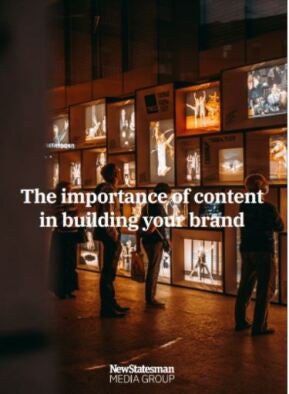
Phillip Othen takes a closer look at virtual reality marketing. This article was produced in association the New Statesman Media Group’s AI-driven marketing solution Lead Monitor.
The global virtual reality market size was valued at $15.8bn in 2020, and is expected to reach $69.6bn by 2028, according to Grand View Research figures this year.
Within marketing, the execution of VR mainly comes in two forms: fully immersive with equipment or augmented reality (AR), where a virtual image is overlaid on the real world through a phone or computer.
Expense is clearly a factor in choosing the right tech for a campaign, with AR able to provide reach for a small cost (through an app, for example), while VR tends to be static, as the set-up and associated apparatuses need to exist in the real word.
One of the most popular VR concepts centres on consumers being able to enjoy a product or experience prior to laying down money.
The success of the IKEA Place app is a perfect example. Allowing you to “virtually place true-to-scale 3D models in your very own space”, it has been a massive success, and no wonder – the thought processes behind its growth is impressive.
Not only is the room scanning and 3D modelling almost perfect, but a separate soundtrack accurately mirrors the noise each piece of furniture makes dropping on to the carpet.
A VR headset view can also show real footage shot with a 360° camera.
This is vital in the use of this technology in the travel industry. By allowing customers to ‘live’ in a virtual hotel near a Barbadian beach, walk through a resort to discover the amenities, or see the view of Paris from Eiffel Tower’s zenith, you are marketing a destination or holiday with all the senses.
VR is also ideal for increasing empathy in a cause or social initiative. Indeed, Stanford University found in 2020 that using VR to educate about social issues increased empathy and encouraged participants to change their behaviour.
For brands keen to demonstrate their support for charitable, humanitarian and environmental causes, VR is a far stronger medium than the written word or the odd advert.
 Free white paper: The Importance of Content in Building Your Brand
Free white paper: The Importance of Content in Building Your Brand
Read New Statesman Media Group’s in-depth white paper report now detailing how to create impactful digital marketing content from inception to finished product.
Virtual reality marketing case studies
Nanome, a San Diego-based start-up, partnered with LifeArc, a medical research charity, and developed a VR program that took incredibly complex and intricate drug development from the flat PC screen to a 360° environment.
“With VR, now we can ‘stand inside’ the lock (our protein), and look at its shape and it’s features,” says David Pardoe, Head of technology development, LifeArc.
“We can also actually walk around inside this space, and this physical movement helps us to better understand the spatial relationships between features inside the protein in a much more meaningful way than fiddling with a mouse on a flat table while looking at a flat screen.”
Meanwhile, back in the UK, distinguished sailor Geoff Holt decided to give young disabled people a unique seafaring experience via VR headsets. Especially important during the pandemic with the isolation felt by those less able to leave the house, this experience involved a rip-roaring powerboat ride.
“There is something very special about being on the water,” enthuses Holt. “For someone with a disability, being at sea offers unparalleled freedoms. Your mind and imagination fill with things that once didn’t seem possible.”
Email pged@pressgazette.co.uk to point out mistakes, provide story tips or send in a letter for publication on our "Letters Page" blog
